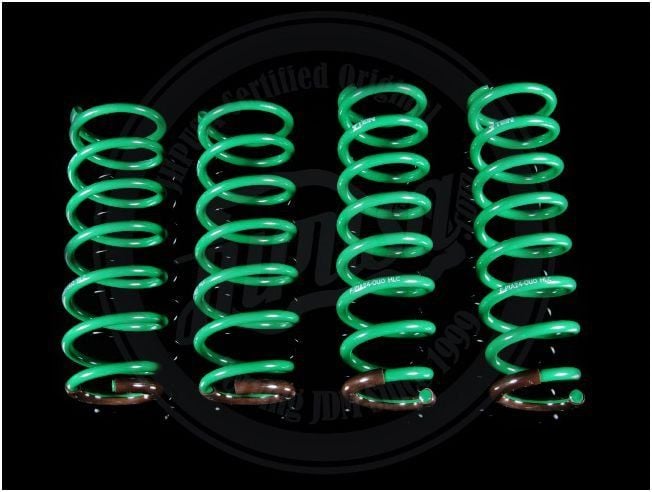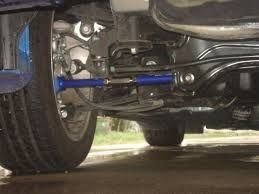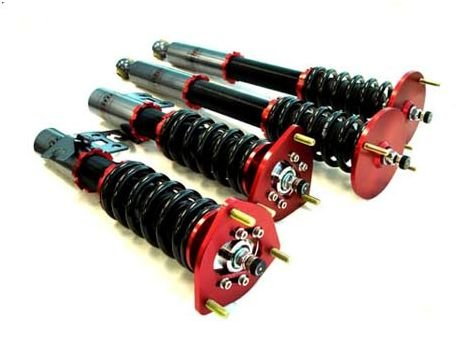Honda Accord: Suspension Modifications
A good suspension has always been a balance between handling and comfort. You can achieve this balance when you modify or add suspension components to your Accord. You can also lower your vehicle without buying a special lowering kit. Read on to learn about the how and why of the modifications, and at what cost.
This article applies to the Honda Accord (1990-2002).
This article covers a number of parts and components that you can use to modify and improve your Accord's suspension. These include lowering springs, shocks, camber kits, and coilovers.
Basic Suspension Upgrades
The suspension system consists of inter-dependent components that work together to provide the steering, handling, and comfort you want your vehicle to have. When upgrading or replacing suspension parts, be sure to replace any worn parts such as ball joints, control arms, or tie rods. Replacing worn parts assures your modified suspension system will give you the results you desire.
Lowering Springs

DIY Cost –$90-300
DIY Time – 2-3 hours
Professional Cost – $200 plus the cost of parts
Skill Level – Moderate; springs have to be compressed in order to be safely removed; you will have to be comfortable working under the car
Lowering springs are an option for those who want an inexpensive means of lowering their car. With springs alone, there is no height adjustment; however, Accord owners do have the option of converting their springs with an adjustable perch that can be wound up or down to change the ride height. Lowering springs typically give you the option of between a 0.5"-3" drop, depending on the springs chosen. With either option, it is strongly recommended to replace the shocks at the same time, as the aftermarket springs will sit lower, and have a higher spring rate (i.e. stiffer) than the OEM parts. A quality aftermarket shock will be better prepared to handle the lowered ride height.
Shocks

DIY Cost – $100 for OEM replacements - $1,000+ for race shocks
DIY Time – 2-3 hours
Professional Cost – $200 plus the cost of parts
Skill Level – Moderate; very similar to the spring install; will require unbolting suspension pieces for access
The Accord is equipped with struts and springs from the factory. These tend to be tuned for a more comfortable, compliant ride, and should be expected to last between 60,000-100,000 miles. Aftermarket shocks are available with more aggressive damping, or adjustability of stiffness, compression, and rebound, to fine tune for exactly what you're looking for. A commonly used upgrade are Koni "Yellows" which offer a nice upgrade in handling and rebound adjustability. These shocks can easily handle a lowered or stiffer spring and start at around $500 for the set.
Camber Kits

DIY Cost – $100-$200
DIY Time –2 hours
Professional Cost – $100+ plus the cost of parts
Skill Level – Moderate; will involve removing additional suspension components for access
The big concern here is tire wear. Most vehicles do not need a separate camber kit. But you do need a proper "toe" adjustment to ensure your tires wear evenly and do not wear out prematurely. If you want to adjust camber frequently or in special applications, install camber adjusting components on all four wheels.
Coilovers

DIY Cost – $100-$200
DIY Time – 2 hours
Professional Cost – $100+ plus the cost of parts
Skill Level – Moderate; will involve removing additional suspension components for access
On coilovers, the spring mounts on the strut itself; it is a coil spring over a shock, hence the name coilover. After installation, you can adjust the right height, hardness, and softness of the ride. Coilover kits are useful because the shock is fine tuned to match the spring, offering superior handling and ride quality.
Pro Tip
Tires are a vital upgrade to ensure the highest quality of handling for your car. You should only set the suspension to be as stiff as you have tire grip to match. If you have bad tires, and set your car up to be very low and stiff, you are actually reducing the ability of the tires to grip the pavement. High-performance rubber will see that your suspension investment is not a wasted effort.
Related Discussions
- Accord Suspension Upgrades - Honda-Tech.com
- Coil Overs vs. Struts and Springs - Honda-Tech.com
- Which Suspension Components to Replace - Honda-Tech.com
- Best Camber Kit - Honda-Tech.com
- Lowering Springs - Honda-Tech.com






